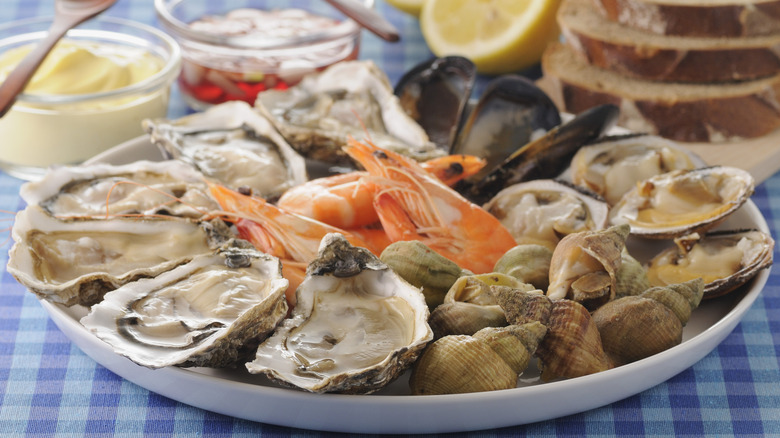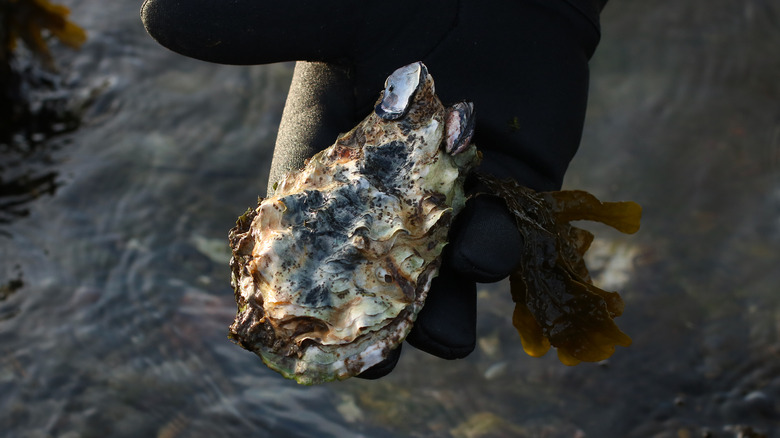Dozens Of Reported Illnesses Prompt Recall Of Galveston Bay Oysters
Galveston Bay is located in Texas along the western part of the Gulf of Mexico. The bay is well known for its oysters, and according to Back the Bay, the harvesting period between November 1 and April 30 is normally "the open-to-everyone season." Unfortunately, it is during the height of the open season this year that Galveston Bay is on oyster lockdown after some unfortunate news.
The Texas Health and Human Services published a recall announcement on December 9 for any oysters harvested between the dates of November 17 and December 7 in the part of southeastern Galveston Bay known as TX 1. The seafood has been associated with a spate of illnesses, prompting this precaution as well as an investigation. If you recently bought oysters from that part of Texas, check the packaging to see harvest dates and discard them immediately if they fall within the time frame. The recall applies to shelled and shucked oysters only. So this is the only seafood being recalled.
Better safe than sorry
ABC News 13 said that there have been multiple cases of gastrointestinal illness connected to the oysters harvested from the TX1 portion of Galveston Bay. Forty-plus people have experienced symptoms such as fever, nausea, diarrhea, vomiting, abdominal cramps, and chills. Luckily none have been hospitalized as of yet. KHOU 11 reports that three or more people suffered from norovirus after eating the Galveston Bay oysters. According to the Washington State Department of Health, the transmission of the virus through oysters usually occurs because people often consume them raw.
Raw or incompletely cooked oysters can also be linked to illness-causing Vibrio bacteria, according to the Centers for Disease Control and Prevention. Since oysters harboring dangerous bacteria might not show obvious signs of contamination, you wouldn't be able to tell just by taking a whiff or by the seafood's appearance. For all intents and purposes, the tainted items might seem fine, which is why you should not risk ingesting the oysters if you have any from the affected area.

